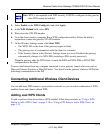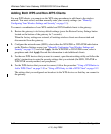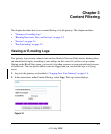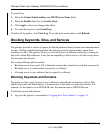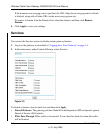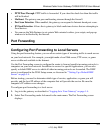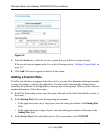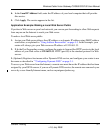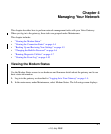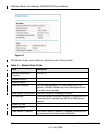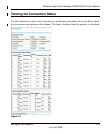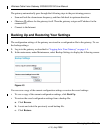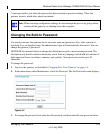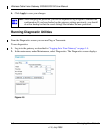
Wireless Cable Voice Gateway CG3000/CG3100 User Manual
Content Filtering 3-7
v1.0, July 2009
4. In the Local IP Address field, enter the IP address of your local computer that will provide
this service.
5. Click Apply. The service appears in the list.
Application Example: Making a Local Web Server Public
If you host a Web server on your local network, you can use port forwarding to allow Web requests
from anyone on the Internet to reach your Web server.
To make a local Web server public:
1. Assign your Web server either a fixed IP address or a dynamic IP address using DHCP address
reservation, as explained in “Using Address Reservation” on page 4-5. In this example, your
router will always give your Web server an IP address of 192.168.1.33.
2. 2. In the Port Forwarding screen, configure the router to forward the HTTP service to the local
address of your Web server at 192.168.1.33. HTTP (port 80) is the standard protocol for Web
servers.
3. (Optional) Register a host name with a Dynamic DNS service, and configure your router to use
the name as described in ““Configuring Dynamic DNS” on page 5-1.
To access your Web server from the Internet, a remote user must know the IP address that has been
assigned by your ISP. However, if you use a Dynamic DNS service, the remote user can reach your
server by a user-friendly Internet name, such as mynetgear.dyndns.org.



